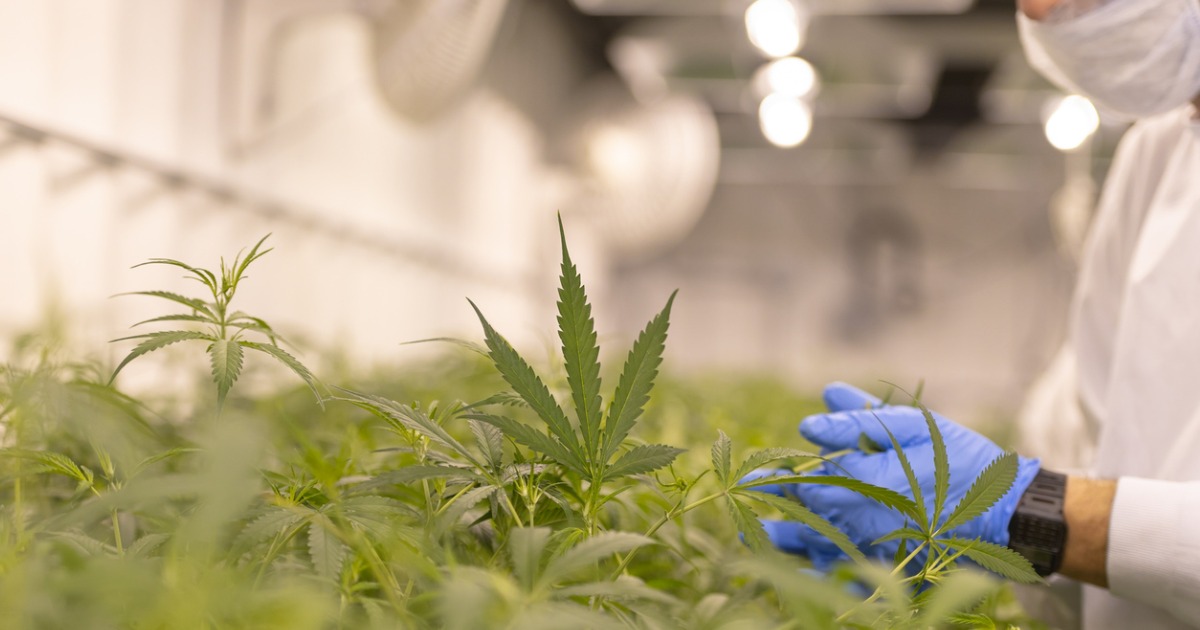When it comes to the medical benefits of cannabis, it seems like there’s always another compound to discover, another level of healing to experience, and another medicinal effect to utilize. In this article we discuss a particularly interesting one: the cannabis entourage effect created by the mixing of the hundreds of compounds in it.
For example, if you already know about THC and CBD’s healing effects, have you heard about CBD and THC’s grand-daddy compound Cannabigerol, or CBG? It’s only available in cannabis’ raw form and studies have linked it to an incredible list of benefits:
- Stimulates bone formation and healing
- Slows tumor growth
- Antifungal/antibacterial
- Pain relief
- Inflammation relief
- Bladder treatment
- Psoriasis and skin treatment
- Glaucoma
- Neuroprotective
The reason cannabis’ healing manifests in the human body with so much power is largely due to what’s called the cannabis entourage effect. This is due to the hundreds of therapeutic compounds like CBG and also “terpenes” like linalool, caryophyllene, myrcene, and others.
Each of these little chemicals packs its own unique profile of effects, flavors, and smells to each strain of cannabis. Myrcene for example can assist other cannabis compounds in passing the blood-brain barrier, pinene can counteract memory issues, and caryophyllene is a powerful anti-anxiety medication.
These various strains of cannabis have a mixture of these compounds and is why they all have such a wide variety of effects, smells, and benefits.
Who Discovered The Cannabis Entourage Effects?
Originally discovered by Israeli researcher Raphael Mechoulam, the synergistic effects are achieved when THC-A (tetrahydrocannabinolic acid) interacts with phytocannabinoids, like cannabidiol and other terpenes. Mechoulam is also credited with discovering the endocannabinoid neurotransmitters anandamide and 2-AG.
For a detailed review on the cannabis entourage effect from the British Journal of Pharmacology, Dr. Ethan Russo’s study “Taming THC: potential cannabis synergy and phytocannabinoid-terpenoid cannabis entourage effects” is an outstanding document.
For an easier to digest review, the below video from our pals at Leafly.com is excellent.
Anyone willing to question the righteous authority of pharmaceutical advertising and do their research onmedical cannabis or the medical cannabis entourage effect will find that the science is truly settled.
Knowing this, it’s challenging to understand how cannabis skeptics can be aware of this scientific proof, have any awareness of the tragic side effects of opiates, and not howl from the rooftops in support of medical marijuana.
If you’re a physician who’s already recommending medical marijuana, or considering doing so, we should discuss becoming a MY FLORIDA GREEN physician. We partner with doctors who support medical marijuana across the state and have streamlined the most frustrating parts of the medical marijuana certification process.
As a MY FLORIDA GREEN doctor you’ll have access to a turn-key system that makes it safer and far easier to recommend medical marijuana to your patients.
If you believe in the medicinal power of medical cannabis or the cannabis entourage effect or have patients who will benefit, you can explore the benefits becoming a My Florida Green physician here.
For patients or doctors that are still skeptical, or already believe in medical cannabis and the cannabis entourage effect, the below article does a excellent job of detailing the science behind the incredible effects of two of cannabis’ root compounds: THC-A and CBD-A.
THC-A & CBD-A: What Are The Benefits?
Reposted from LeafScience.com.
As much as we might be tempted to speak in terms of competing substances when it comes to the healing properties of marijuana, the truth is that what makes cannabis so remarkable on so many fronts is the synergy that appears to occur between all the substances within it.
Since visionary cannabinoid researcher Raphael Mechoulam began writing about the “Cannabis Entourage Effect” in the mid-nineties, science has been learning more and more about how each molecular component of the cannabis plant works together for healing on a multitude of levels. This is true for the state one finds these substances as well. THC-A and CBD-A are both found in the natural, raw, live cannabis plant. And recent research is discovering that both have powerful properties of their own when it comes to treating disease, especially cancer.
What Are THC-A & CBD-A?
Cannabidolic Acid (CBD-A) and Tetrahydrocannabonolic Acid (THC-A) are similar in a lot of ways. Both are acid-based substances found in the raw, living cannabis plant. Both are completely non-psychoactive. And both convert to their counterparts—CBD and THC respectfully– when heated above a certain temperature (roughly between 200 to 290 F for THC-A and between 240 F to 290 F for CBD-A).
The process through which these “A” substances are able to turn into their better-known counterparts is called decarboxylation. This is because both THC-A and CBD-A lose carbon atoms to form THC and CBD when heated. The most common way that decarboxylation occurs is through smoking or vaping, although cooking and baking cannabis, such as for making edibles, will stimulate decarboxylation as well.
THC-A and CBD-A are similar in one more important way: both of these cannabinoids can help with healing some of the most serious disease conditions.
The Cancer-Healing Power Of CBD-A
CBD-A has been in the news a lot lately, mostly for the new-found ways it has shown to inhibit cancer. The link between cancer and CBD-A was catalyzed by a 2012 study that took a look at CBD-A’s effect on breast cancer cells. This and subsequent studies discovered that CBD-A in raw cannabis can suppress the COX-2 enzyme, a major instigator of breast cancer metastasis, as well as other forms of cancer.
The latest study, published in January 2017 in the Journal of Natural Medicine by researchers at Hiroshima International University, adds further light to the subject. The researchers discovered a possible way that CBD-A inhibits the COX-2 enzyme in highly-aggressive breast cancer tumors. Their study focused on CBD-A’s inhibition of proto oncogene c-Fos, a common precursor to proteins involved in cancer metastasis.
CBD-A along with THC-A have also been known for some time for its anti-inflammatory effects; in fact, this is a large part of what makes it a potential cancer-killer. A 2011 Swedish study evaluated six different cannabinoids—CBD-A and THC-A as well as THC, CBD, CBDA, CBG and CBGA– for their effects on inflammatory processes, including COX-2. They found that all six of these substances together had a profound effect on inflammatory processes in laboratory colon cancer cell lines. According to the researchers:
“The Endocannabinoids are structurally similar to arachidonic acid and have been suggested to interfere with the inflammatory process. They have also been shown to inhibit cancer cell proliferation.”
Arachidonic acid is an Omega-6 fatty acid which is a necessary element in the body for brain health and overall functioning of almost every system in the body. It is an anti-oxidant and mediator of harmful inflammatory reactions such as the ones that occur with major illnesses like cancer. The study’s discovery of endocannabinoid structures which are similar to those of other healing substances in the body is exciting. It is further proof of cannabis’ ability to balance the endocannabinoid system for overall disease healing.
THC-A: A Potent & Still-Mysterious Healer
While there is still much research that needs to be done on CBD-A, there is even more that remains a mystery about THC-A, the non-psychoactive, raw (before decarboxylation) form of THC. The Swedish study mentioned above as well as a few other studies, however, have proven that THC-A is a powerful anti-inflammatory as well.
As such, it is also thought to have anti-proliferative effects against cancer growth and metastasis. It is also a known neuro-protectant, an anti-spasmodic and a powerful endocannabinoid for pain.
THC-A has also been shown to be an immune-system regulator. According to the latest science, THC-A effects the endocannabinoid system as a whole, not just CB1 receptors. THC-A can affect the release of inflammatory enzymes COX-1 and COX-2 as well as TNF-Alpha. It also aids in the production of interleukin-10. This powerful anti-inflammatory cytokine, also known as Human Cytokine Synthesis Inhibitory Factor (CSIF), is produced by T Cells in the immune system.
While CBD has been known for its effects on epilepsy and seizures for some time, and in recent years ∆9-THC has been found to be helpful, new research is pointing to THC-A’s benefits on this front as well. Among the most current investigations was a study conducted by the University of Alabama and published in the January 10, 2017 edition of the medical journal Epilepsy and Behavior.
More Research Needed For CBD-A & THC-A
The research that does exist on the health benefits of both CBD-A and THC-A, especially when it comes to cancer, provides great news for those who want to heal with cannabis but whose systems may not respond positively to the psycho-active effects of THC.
Hopefully, with more and more states opening their doors to medical marijuana (the whole plant, not just CBD) and with research into Marijuana Entourage Effect in states like Colorado beginning to trickle in, more results will happen regarding substances that exist in the natural, raw cannabis plant, like CBD-A and THC-A, as well.













